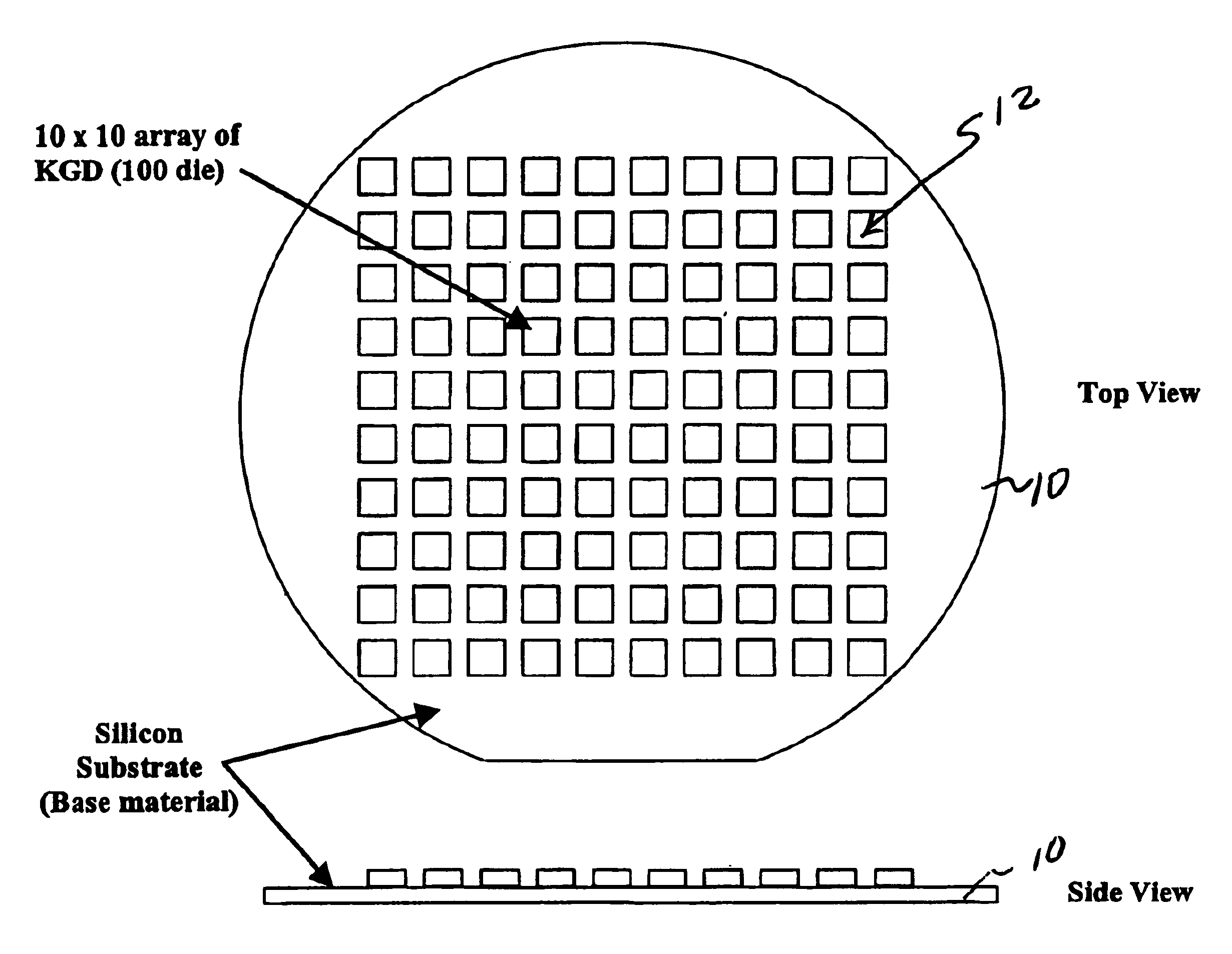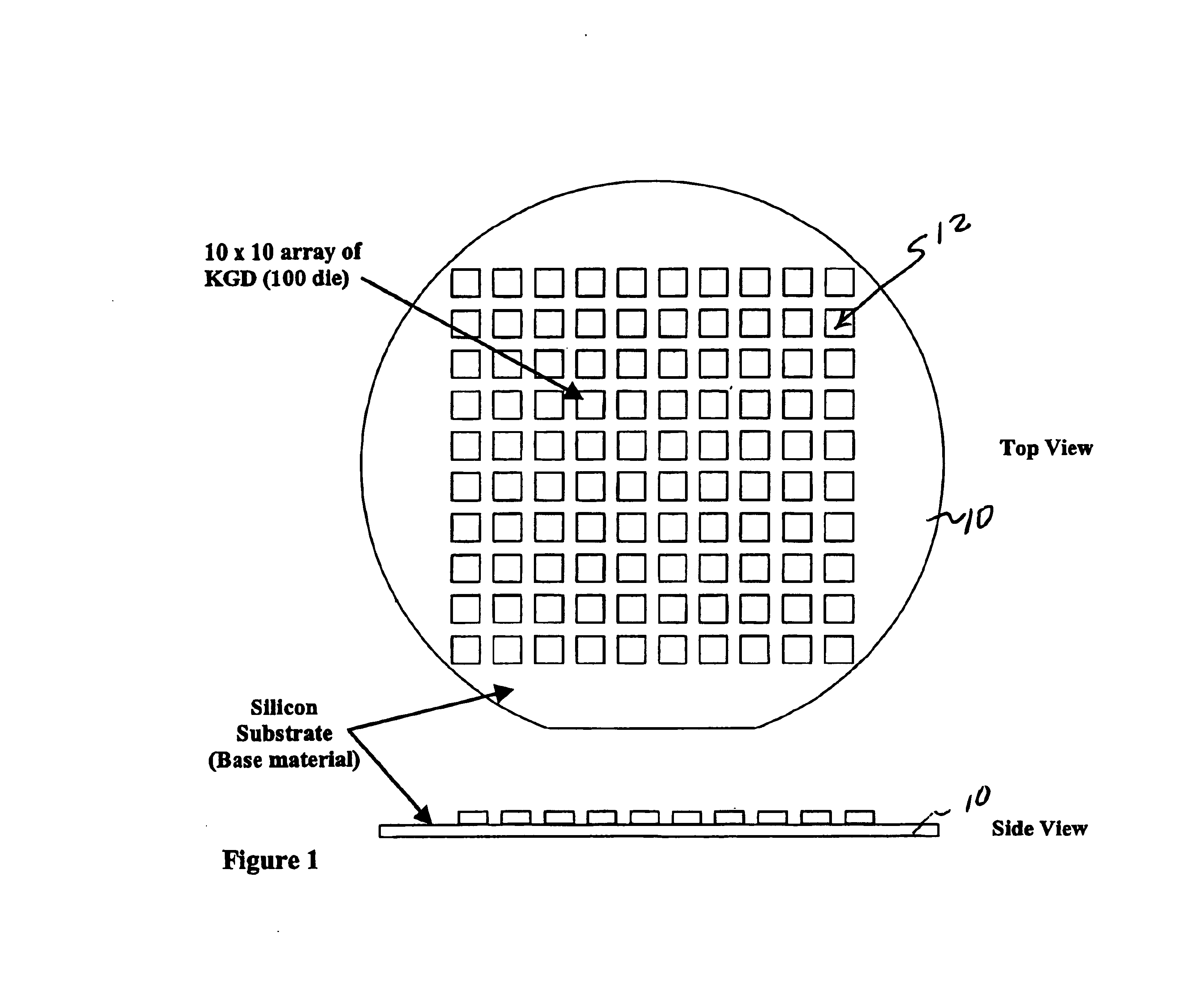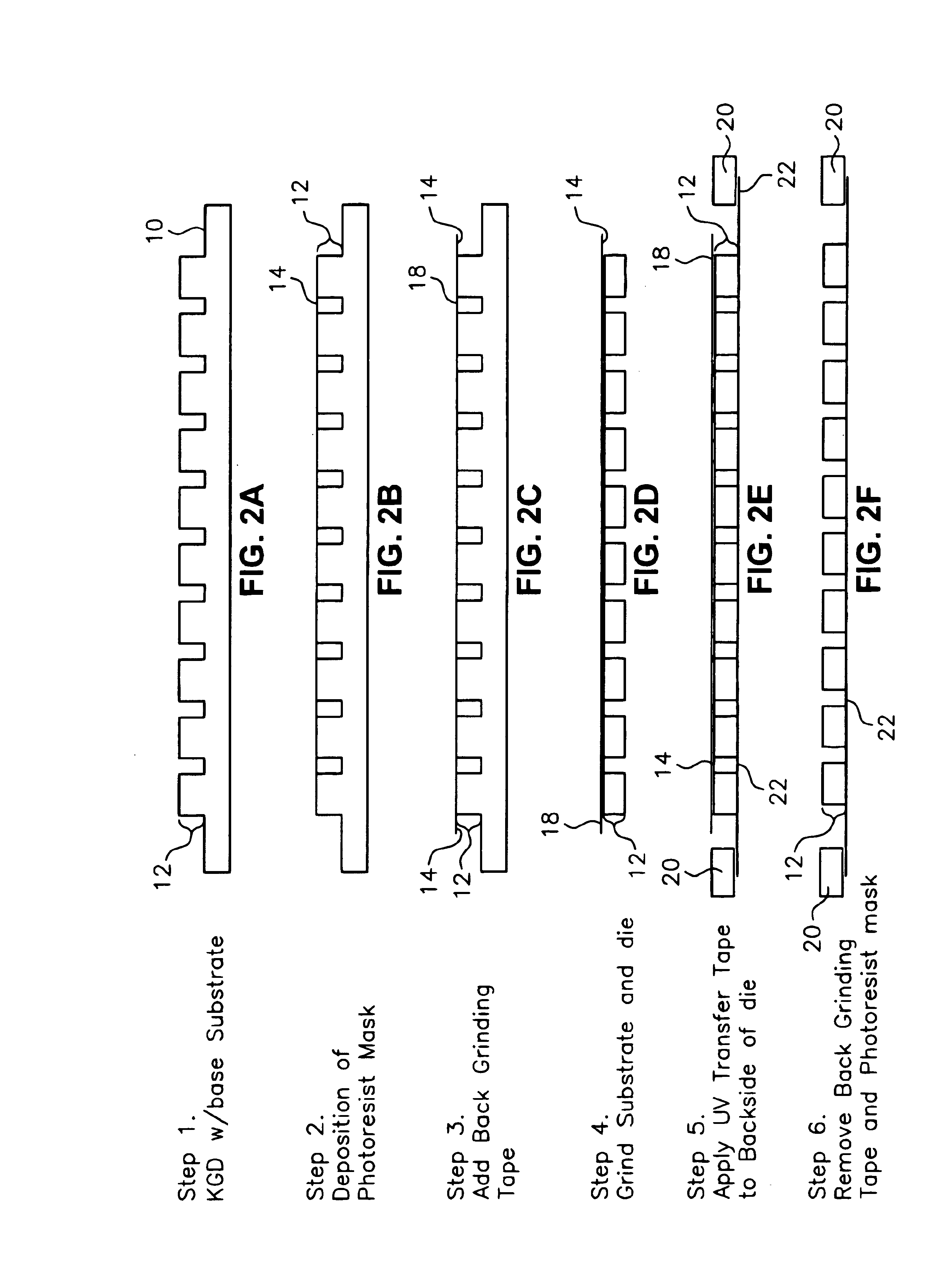Die thinning methods
a technology of thinning methods and dies, applied in the direction of basic electric elements, semiconductor/solid-state device manufacturing, electric apparatus, etc., can solve the problems of power, size, weight, and weight, and the need for compact packaging of electronic components, and the complexity of electronic systems
- Summary
- Abstract
- Description
- Claims
- Application Information
AI Technical Summary
Benefits of technology
Problems solved by technology
Method used
Image
Examples
Embodiment Construction
Provisions are suitably provided to provide a method to thin a known good die 12 also known as the known good die 12 thinning process. According to the preferred teachings of the present invention the known good die 12 thinning process reduces known good die 12 from a full thickness of 26 mils down to 5 mils, or other reduced dimension, by using a dielectric deposition, pick and place, and grinding processes. The process was developed to reduce the thickness on individual known good die 12, and not an entire six, eight or twelve inch wafer.
A known good die is classified as a fully functional integrated circuit (IC) used in the microelectronics industry. A die is also known as an integrated circuit (IC), or chip. A thinning Process is a process that reduces the die thickness from full to a reduced thickness. In one example embodiment, die thickness is reduced from 26 to 5 mils. A die pick and place process is a process that utilizes a pick and place tool to place die 12 at predetermi...
PUM
 Login to View More
Login to View More Abstract
Description
Claims
Application Information
 Login to View More
Login to View More - R&D
- Intellectual Property
- Life Sciences
- Materials
- Tech Scout
- Unparalleled Data Quality
- Higher Quality Content
- 60% Fewer Hallucinations
Browse by: Latest US Patents, China's latest patents, Technical Efficacy Thesaurus, Application Domain, Technology Topic, Popular Technical Reports.
© 2025 PatSnap. All rights reserved.Legal|Privacy policy|Modern Slavery Act Transparency Statement|Sitemap|About US| Contact US: help@patsnap.com



